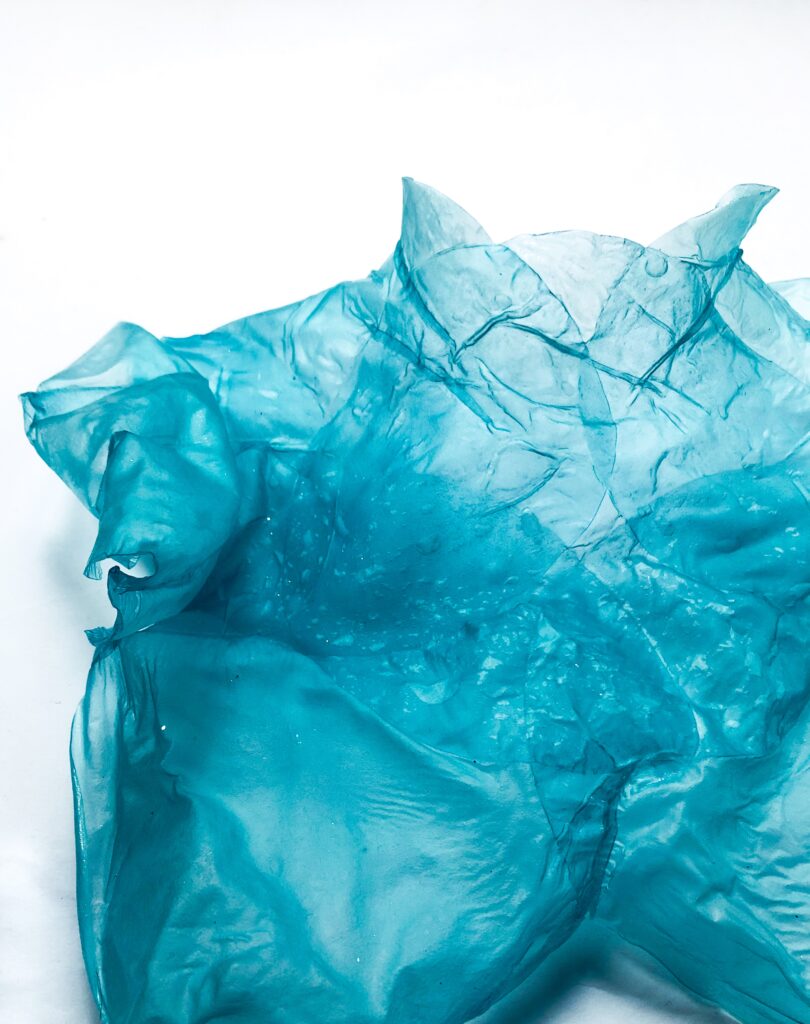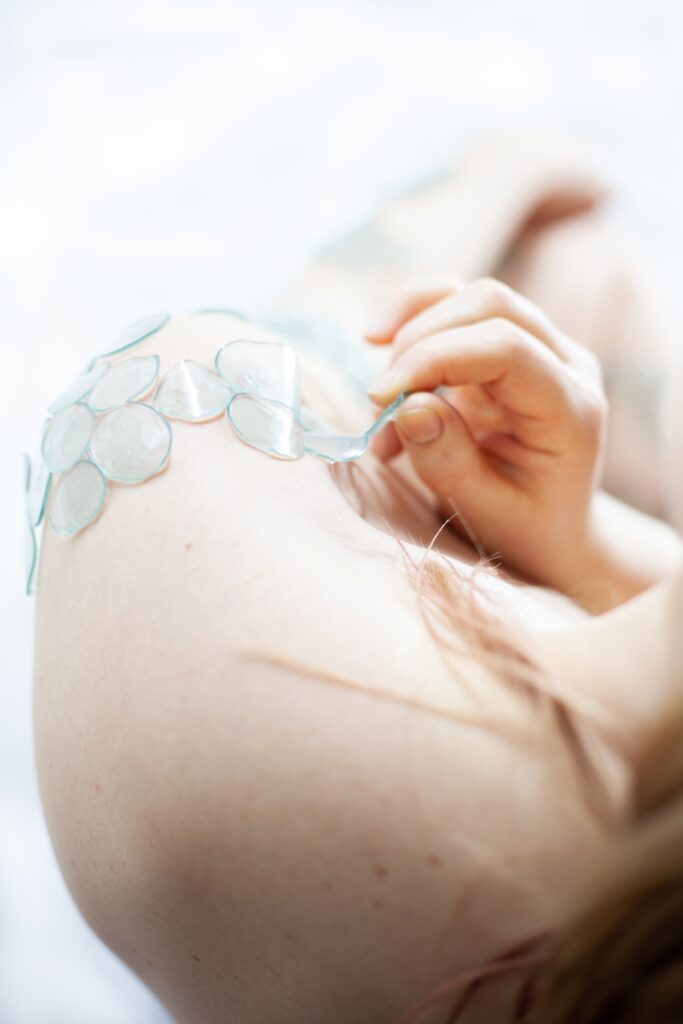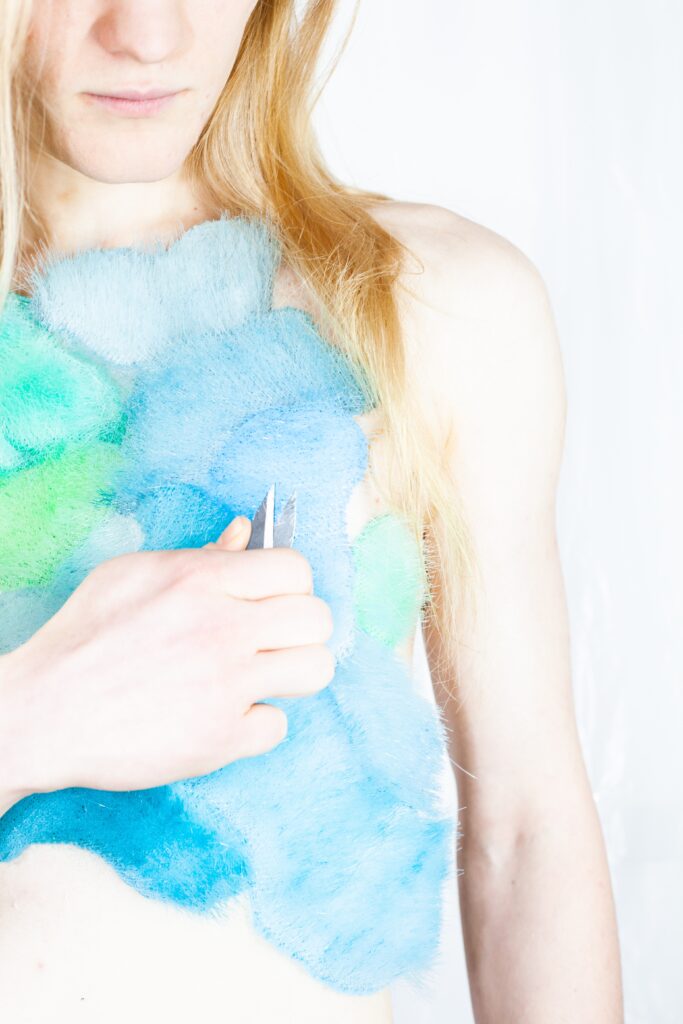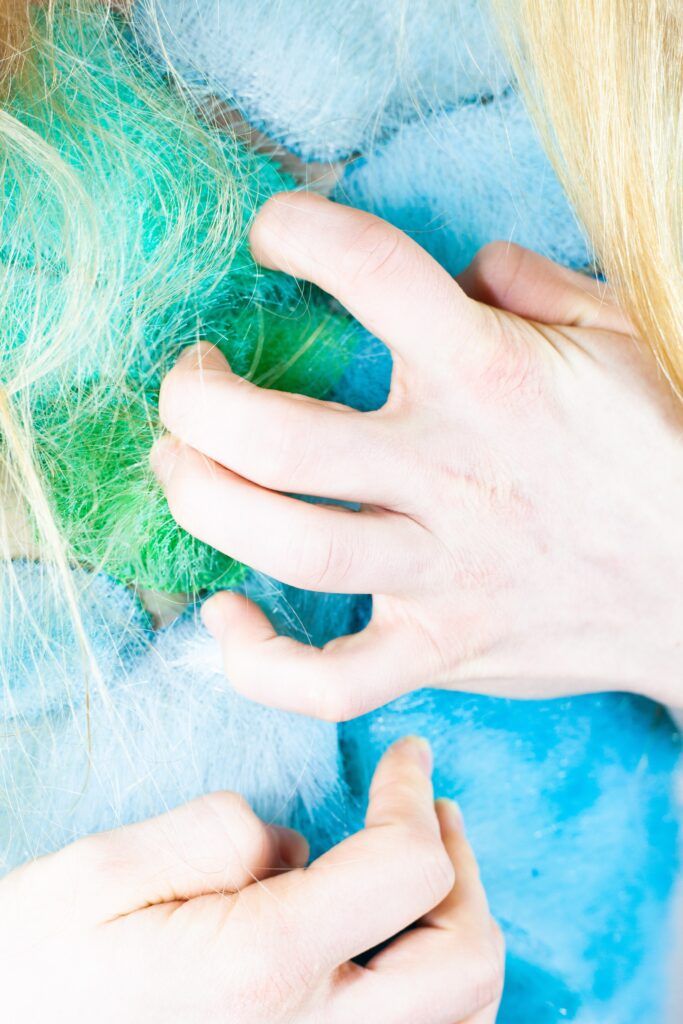Textil- und Flächendesign
Deutsch
English
Plastic on Body, WS 20/21
SCENARIO
We are now in the year 2120 and still struggling with the aftermath of rising sea levels, genetic manipulation of food crops and over-reliance on fossil fuels. Man’s abuse of nature culminated into an overall environmental ca- tastrophe decades ago. By that time a growing amount of micro plastics had permeated all levels of nature and forced humans to live isolated from nature in the attempt to rebalance what we have destroyed.
For many years we didn’t rethink the use of plastics and how to re-use the material in a different way, until finally a global decision had to be made to secure the future survival of mankind and nature. All new production of plastic materials was eliminated, along with a full stop of the extraction of crude oil, only allowing already existing plastic to be further used. Concurrently technological evolution brought up a radically new approach, allowing the human body not only to adapt to plastic, but also to collect and harvest it. This made it possible to use hu- mans as vessels for extracting plastic from the increased pollution with micro plastics in the environment, thereby simultaneously cleaning the environment and still fulfill- ing the demand for the material plastic.
Driven by the impact of micro plastics, fashion has changed accordingly as well. To alter one’s body is some- thing that has been influenced by both developments in technology and fashion for decades. The difference is that the new movement is focused on both vanity and functionality compared to the traditional non-functional alteration of our bodies like plastic surgery or tattoos. When humans started collecting plastic through their bodies, a tribal sub-culture came to life. We all belong to some tribe that allows us to identify with those who not only dress like us but might also have the same interests. Therefore humans started identifying with what kind of plastic was growing on their bodies in a form of self-expression and thereby the ability to change it if desired.
CONCEPT
As a response to the governmental endorsement, the fashion industry created multiple types of POB (Plastic on body) elixirs in order to give the consumer a possibili- ty of self-expression while on duty.
Combined with different types of POB-elixirs as a catalyst, the body is both used as a reproduction plant of plastic where plastic goes into symbiosis with humans as well as a product for the consumer to convey their personality. POB condense the plastic internally and makes it prone to seek the surface of the body where it can be salvaged.
Use of different types of POB-elixir produces different types of plastic on the skin:
POB-01 combined with micro plastics from food and water consumption will run through the veins and slowly penetrate through the skin as plastic blister packs.
POB-02 generates the micro plastic on the entire sur- face of the skin and becomes a plastic body-coating which can be peeled off as a second skin.
POB-03 reacts to the plastic fibers entering the lungs, starting to penetrate the tissue on the chest and grow on the skin like hair.
POB-01 reacts to the plastic fibers in your body. While cleaning your lungs, the fibers penetrates the tissue on your chest and gives you an extraordinary furry look full of colour. Ideal for the flamboyant type that doesn’t mind stealing all the attention in the room.
POB-02 collects the micro plastics from food and water consumption and leaves you with a gentle coverage of plastic spots. The look is more subtle with a neutral and transparent colour that works perfectly if you are the type that likes minimalism and elegance.
POB-03 generates the micro plastic in your skin. Af- terwards the plastic penetrates the skin and gives you a smooth coverages on the entire surface of the body. It becomes a plastic body-coating which can easily be peeled off like a second skin and thereby gives the user the ability to be more discreet if desired.
New POB-types are still being developed. After the growth, humans can harvest all the different kinds of plastic from their skin and forward it to the production companies.








